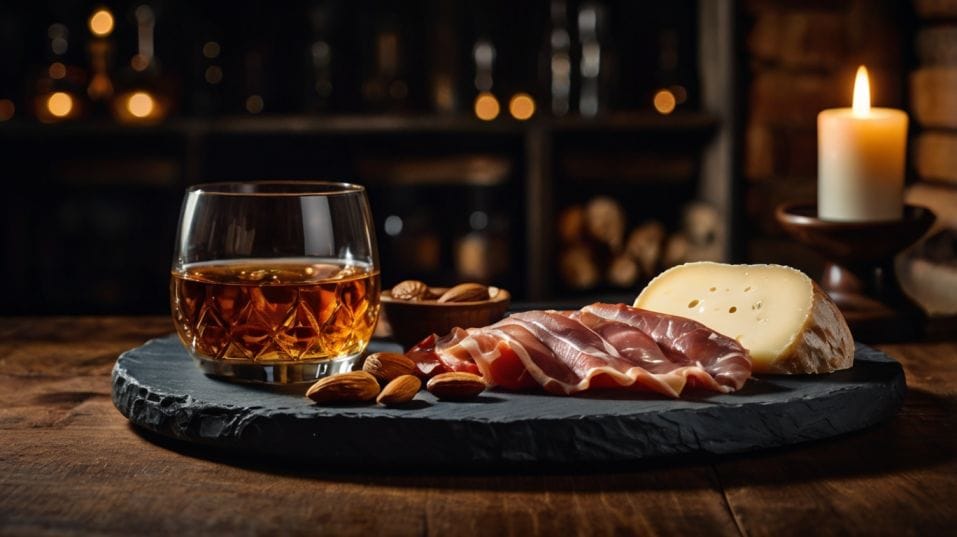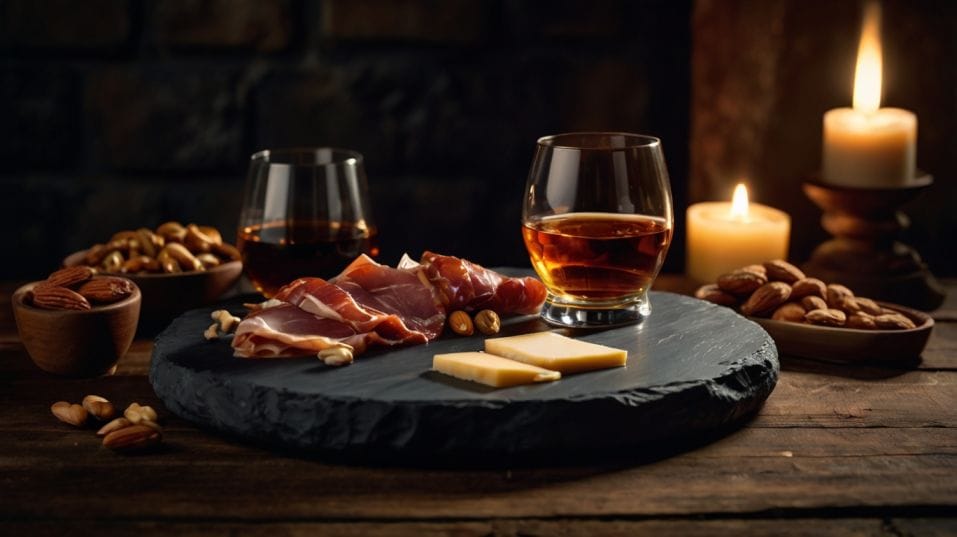Best Appetizers for Whiskey Tastings
Level up your whiskey tastings with smart, flavor-boosting appetizers. Learn what to serve—and what to skip—for your best sip yet.

Ever wonder why some whiskey tastings feel flat while others light up your palate? It’s not just the bottle—it’s the bites. What you eat before and during a tasting can unlock bold flavors or blur them into blandness.
The right appetizers sharpen your senses, slow down the burn, and help every subtle note shine. Whether you're sipping your first single malt or curating a flight, pairing with purpose is how you taste like you mean it.
Salty, Fatty, Savory: The Foundation of a Functional Pairing
Salt and fat aren’t luxuries—they’re your core tools. Salt activates taste receptors and modulates alcohol burn.
Fat, especially from meat and cheese, slows down the alcohol’s absorption and gives flavors more time to bloom across your palate. Start with aged cheeses—sharp cheddar, gouda, Parmigiano Reggiano.
They bring intensity and umami, which pair perfectly with the oak-driven depth of a well-aged bourbon or sherried Scotch. Each bite sets your palate up for contrast and complexity.
Now add cured meats. Prosciutto, bresaola, speck—anything dry-cured with real aging behind it. Salty, slightly funky, and rich in texture, these meats connect naturally to the earthy, leathery notes in single malts or spicy ryes.
And when you’re working through multiple whiskeys, they reset the palate better than any cracker ever could.
Smoked or roasted nuts belong here too. Almonds, hazelnuts, and pecans offer crunch and richness without sugar overload. If they’re lightly salted and roasted, even better.
They bridge gaps between pours, especially in a flight where one whiskey might be bold and peaty, and the next softer and grain-forward.

Know What to Avoid (and Why)
Too many tasting events crash early thanks to poor food choices. Sweet glazes, sugary dried fruit mixes, bacon-wrapped “novelties”—they kill your palate before it has a chance to do its job.
Why? Because sugar flattens contrast. It blunts bitterness and acidity, which are two of the key flavor axes in any good whiskey.
Once you throw your balance off, everything tastes round and vague. That sherry finish that’s supposed to reveal dried fig and clove? Gone. Replaced by a general sense of “smooth.”
Avoid anything sticky, sugary, or overwhelmingly spicy at the front of a tasting. Save dessert pairings for the end—if at all. You’re not here to satisfy a sweet tooth. You’re here to learn something about what you’re drinking.
Bread and Crackers: Use with Intent
Palate cleansers have a place—but not as filler. If you’re reaching for a baguette every two minutes, you’re not tasting, you’re grazing.
Keep bread neutral, dense, and unsweetened. Rye crisps, unsalted matzo, or even thin crostini work well if they’re carriers, not distractions.
That means using them to support more flavorful elements: a slice of sharp cheese, a dab of pâté, a shard of smoked salmon. Bread on its own? Keep it minimal. Its real job is to reset your mouth, not to feature in the tasting.
If you’re working through a strong, diverse lineup—say, a peated Scotch, a high-proof bourbon, and a grain-heavy Japanese whisky—then yes, reset your mouth.
But don’t let it become automatic. Your palate doesn’t need a blank slate between every pour. Sometimes a little flavor memory between sips is where the most useful comparisons happen.
Don’t Forget Texture: A Secret Weapon in Tasting
Texture affects how you taste just as much as flavor. A crumbly cheese, a crispy nut, a chewy piece of cured meat—they give your palate tactile feedback. That keeps you alert. That keeps you engaged.
Whiskey is high-proof. It overwhelms easily. Smooth, one-note textures dull your mouth, and the more dulled your palate, the more everything tastes like heat or “just whiskey.”
Break that up. Add something crisp, like pickled vegetables or raw radish. Add something fatty but firm, like a pâté or rillette on a cracker. These textures cue your brain to reset, refocus, and re-experience the whiskey in front of you.
Even mouthfeel starts to matter more. Suddenly, you’ll notice how viscous that 12-year bourbon is compared to the drier mouthfeel of a young rye.
You’ll start recognizing tannins from wood, not just general bitterness. This is where serious tasting begins.
Regional Pairing, Minus the Gimmicks
Yes, certain whiskeys come from places with proud food traditions. But don't fall into the trap of “eating Scottish with Scotch” just because it looks good on a placemat. Think in terms of flavor intensities, not maps.
Match Impact, Not Geography
Smoky coastal Scotch? That pairs with raw oysters not because they share a country of origin, but because brine and peat create contrast that sharpens perception.
A full-bodied bourbon with BBQ ribs works not because both come from Kentucky, but because the sweet, charred meat finds an echo in the caramelized oak of a long-barreled whiskey.
Take It Deeper
If you really want to take it up a notch, try a Japanese single malt with pickled ginger or a touch of miso-glazed tofu. It’s not about being “on-theme”—it’s about matching structure, weight, and impact.
The best pairings don’t mimic the whiskey—they balance it. They force your tongue to switch gears and pay attention.
For Group Tastings: What to Put on the Table
If you’re running a tasting with friends, set the table with purpose, not clutter. Aim for diversity in salt, fat, acid, and texture. Here’s a practical spread that works for almost any tasting session:
- Aged cheeses: cheddar, gouda, blue, hard sheep’s milk
- Dry-cured meats: prosciutto, salami, speck
- Roasted, unsalted nuts: hazelnuts, almonds
- Rye crisps or unsweetened flatbread
- Pickled elements: cornichons, olives, onions
- Fresh slices: apple, pear, raw fennel, radish
- One “reset” item: plain water crackers or rice cakes
Keep the quantity small. Tasting is about control, not grazing. Let the whiskey lead—but give it something to talk to.
Final Thoughts
Your whiskey isn’t drinking alone. What you eat with it either sharpens the experience—or muddies it. Think like a flavor technician.
Salt, fat, acid, and texture aren’t “extras”—they’re tools that help you taste deeper, compare smarter, and enjoy with more clarity. So put down the sweet-glazed nonsense. Skip the brand-name cheese board.
Curate your appetizers the same way you’re curating your whiskey shelf: with intention, with purpose, and with the goal of becoming someone who truly gets what they’re drinking.
Tonight, set the stage for a better pour. Slice the good stuff. Pour a whiskey you’ve been saving. And taste like you mean it.




